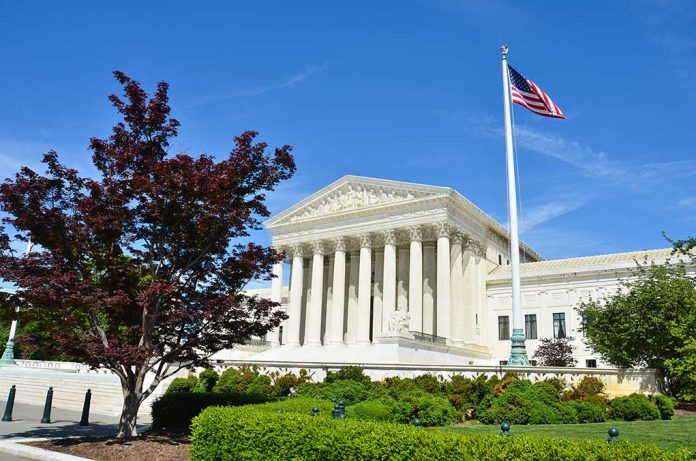
Are 3D-printed firearms about to get a Supreme Court green light?
At a Glance
- Cody Wilson’s groundbreaking 3D-printed gun in 2013 sparked major controversy and legal battles.
- The State Department’s actions against Defense Distributed raise First and Second Amendment concerns.
- Recent Supreme Court decisions uphold ATF’s regulatory authority but hint at future debates.
- Law enforcement’s increasing seizures of 3D-printed guns highlight the legal gray area.
The Origins of 3D-Printed Firearms Controversy
In 2013, Cody Wilson and Defense Distributed made headlines by successfully test-firing the Liberator, the world’s first entirely 3D-printed gun. This unprecedented event led to the dissemination of the Liberator’s blueprints online, downloaded over 100,000 times in two days, causing a mixture of astonishment and alarm. The State Department quickly requested the design be taken offline, citing the need for a license under the International Traffic in Arms Regulation (ITAR).
Defense Distributed argued this move infringed on their First Amendment rights. However, despite losing in court, the case was later settled with the State Department waiving the license requirement, allowing the blueprints to be freely available once again. This settlement raised an even bigger question: Is the distribution of 3D-printed gun blueprints protected under the First Amendment?
Texas Public Radio was there and did a quick interview. I made sure to promote 3D printed guns and said that I own guns to shoot the government when asked why.
— The 3D Print General (@3DPrintGeneral) July 11, 2024
Regulation Challenges and Supreme Court’s Role
August 8, 2023, the Supreme Court upheld the ATF’s authority to regulate ghost guns, including 3D-printed firearms. This decision came amidst a significant rise in arrests related to 3D-printed guns, doubling since 2022, with notable cases in North Carolina and New York. Law enforcement agencies highlight these arrests as evidence of the dangers posed by these untraceable firearms.
However, the legality surrounding 3D-printed guns remains murky. No U.S. law explicitly prohibits the dissemination or printing of CAD gun blueprints. Defense Distributed had earlier sued the State Department, seeking to enjoin the enforcement of ITAR regulations, arguing that these regulations constituted a prior restraint and that distributing 3D gun blueprints is a protected conduct under the First Amendment. Judge Edith Jones’s dissent emphasized that ITAR was a content-based speech restriction deserving of strict scrutiny, showcasing the tension between regulation and constitutional protections.
Future Implications for 3D-Printed Firearms
The stakes are high as the Supreme Court prepares to revisit the issue. The Court’s decision will likely set a crucial precedent in gun legislation and constitutional law, balancing public safety with Second Amendment rights. The ATF’s current rule requires serial numbers for ghost guns and 3D-printed firearms, but a future ruling could redefine these regulations.
This case is emblematic of a larger debate about the scope of government regulation versus individual liberties. Conservatives argue that the existing and proposed regulations overstep the constitutional bounds set by the Founding Fathers. The complexity and depth of this issue make it a landmark case that will resonate in the annals of U.S. legal history.

















